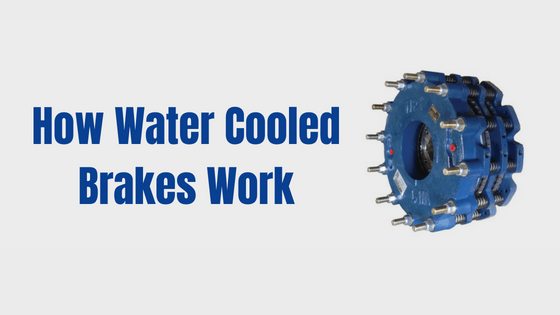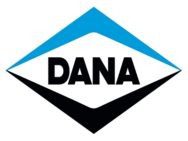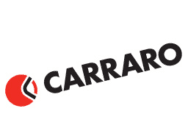Traditional disk brakes usually experience very high temperatures which can have severely detrimental effects on their performance. To lower these temperatures, the use of fluids such as water is imperative to eliminate much of this friction-generated heat.

What are Water-Cooled Brake Systems?
A water-cooled brake disc consists of central and stationary aluminum cooling plate that has an internal chamber which circulates the water coolant. It also has a series of cast iron sectors which are mounted on opposite sides of the disc plate. This is to allow for contact from the friction material carried by discs on the shaft to be slowed down. The cooling plate and iron cast sectors are usually divided by thermally insulative layers such as thin air gaps.
While in use, the sectors have a sufficient thermal capacity that enables them to retain the heat generated from the braking process for a relatively short while. This heat is then transferred to the water over a longer period at a rate which is determined by the conductance of the thermally insulative layers. As such, this kind of brake design is able to absorb and dissipate braking heat efficiently thus mitigating the risk of overheating.
This technology was designed for dry friction disc brakes, internally water-cooled disc brakes and an innovative version of water-cooled discs for the same. Water-cooled brakes find their use in braking axles, wheels, or the like in a variety of applications such as heavy machinery and armored military vehicles.
When Are Water-Cooled Brakes Necessary
The most commonly used kind of braking systems utilizes dry friction disc brakes that are air-cooled externally. This kind of braking system depends on having a large brake disc that absorbs the energy required to meet the braking duty cycle with just the right amount of temperature rise while having a sufficient surface area that will dissipate the braking generated heat into the surrounding area in a reasonable amount of time.
For most road-going machines, the discs are placed upon the wheel hubs which allows for sufficient space which facilitates the airflow necessary for the brake to meet its required performance. However, in instances where the space available for the brake is small such as in heavy machinery, there is typically insufficient airflow for cooling. As such, the brake might not be able to function optimally. Thus, the brake’s performance is severely limited by the reduced rate of cooling. Additionally, it is worth remembering that air is a poor cooling medium because of its low density in addition to the slow rate of heat transfer from the disc’s surface to the air. Therefore, water cooling is the solution to overcoming this limitation.
The Advantage of Water-Cooled Brakes
Water cooled brakes also have an advantage over wet friction brakes. There are heavy vehicles that utilize wet friction brakes. This kind of brake typically has a brake disk and friction material that is mounted inside an axle casing or gearbox where cooling oil is delivered via a circulating pump. This kind of braking system is commonly employed in industrial machinery and heavy vehicles such as dump trucks. The benefit of the wet brake is that it is not susceptible to contamination from the outside environment because it is enclosed inside a transmission casing. However, during high-speed applications, the drawbacks of wet brakes are evidenced by the high-power loss that occurs when they are not braking. This is because of the viscous friction that occurs in the oil between the discs as well as the friction material.
This drawback can be mitigated by only supplying the cooling oil when the brake is operational but at an increased system complexity. Another drawback when using wet friction brakes is that, for machines that require high-performance, the surface temperature of the brake disc might exceed the working temperatures of the oil which is likely to result in oil contamination. Additionally, the brake wearing out will also cause oil contamination.
Whether stationary or rotating in use, the purpose of the water-cooled disc structures in such types of brakes is to transfer the heat generated due to friction during the braking process to the water that is flowing through the discs, which carries the heat away for dissipation through structures such as radiators. In this respect, the art discs comprise of a monolithic metal wall that is contacted on its outside surface by a corresponding friction material whenever the brakes are applied, which are in contact with, in their inside surfaces, with the flowing water coolant. However, it has been discovered that the combination of thermal properties which suit the performance of a water-cooled brake disc best, especially in the context of heavy machinery that invokes peaks braking powers of up to several megawatts, cannot be readily achieved using prior art discs.
This means that it is imperative that the disc’s outer surface portion which comes into contact with the friction material during the braking process, has sufficient thermal conductivity to inhibit excessive surface temperatures. Also, a heat transfer rate through the disc to the water that is too rapid can cause the water to boil within the disc, which might result in excessive pressurization within the system and possible water loss.
In a Nutshell
Brake fade is typically caused by brake fluid boiling due to heat resulting from friction. And for industrial machines, you cannot afford to have your equipment breaking down due to excessive heat or components getting worn out at a drastic rate.
This is why you should incorporate water cooled discs in your heavy industrial machinery or vehicles. Water cooled brakes were created for severe high-heat and constant slip applications. These brakes are actuated by air and are cooled by a continuous flow of water from either open or closed loop cooling systems. The air tube designs are typically corrosion resistant and do not require additional treatments or coatings.
K&L Clutch & Transmission are the leading suppliers of power transmission and clutch components in the country. We believe that the smallest details matter when it comes to getting the most out of your equipment’s productivity. Our designs are thoroughly tested and have a proven track record in the field. To learn more about water-cooled brakes, and other innovative designs, visit us here .


























I wanted to thank you for helping me learn more about water cooled brakes. I had no idea that this kind of brake is usually use with heavy vehicles like dump trucks. I’m interested to learn if this is because the brakes can handle more weight or if they need to react quicker.